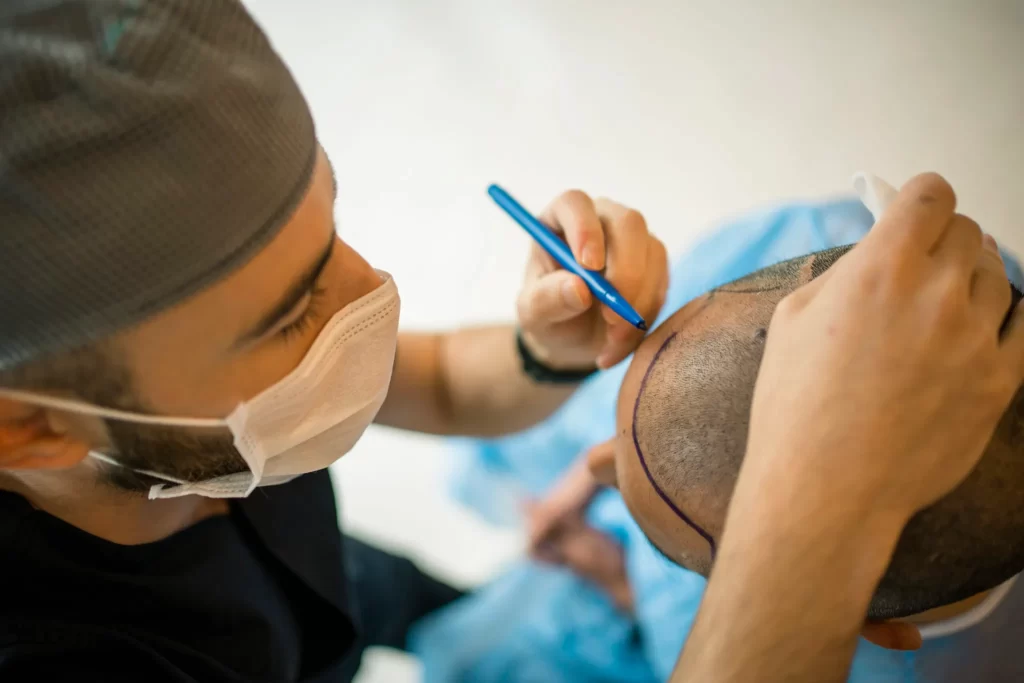Consultation & Planning
The medical consultation is an important first step in your hair loss journey. A qualified & experienced doctor will take a detailed history discussing your hair loss progression, medical concerns, medical history, treatment naivety and desired treatment goals & expectations.
Subsequent to this a hair examination is conducted, evaluating hair quality & density, assisting in the diagnosis of the type of alopecia & prognosis of future hair loss. Only after adequate information is obtained can a suitable tailored management plan be created.
- Patient’s hair loss journey, concerns & expectations: The consultation begins with understanding the patients hair loss journey. We will discuss the patient’s goals, desired outcomes, and any specific expectations they may have regarding the procedure or treatments.
- Medical History: We will discuss the patient’s history, including any past or current medical conditions, medications being taken and previous surgeries or treatments. This information helps the doctor assess the patient’s overall health and identify any underlying factors that may contribute to hair loss.
- Exploring family history of hair loss: As there is often a hereditary component.
- Detailed hair loss assessment: A comprehensive examination of the patient’s scalp and hair (if the consult is in person) or review photos (if online). We look for any signs of inflammation, scarring, or underlying scalp conditions that may affect treatment. Then evaluate the degree and pattern of hair loss, including the areas affected and the extent of hair thinning or baldness.
- Trichoscopy: Trichoscopy involves using a handheld device with magnification and lighting to closely examine the scalp and hair follicles. This technique helps identify specific characteristics of hair loss conditions, such as miniaturisation of hair follicles or signs of inflammation.
- Diagnosis and prognosis: Based on the information gathered the doctor makes a diagnosis and determines the likely cause of hair loss & can estimate the likely progression over time.
- Treatment options: We discuss the available treatment options with the patient, considering both non-surgical such as medications, low-level laser therapy, PRP or PRF injections, or scalp micro-pigmentation & surgical (FUE hair transplant).
- Risks and benefits: The surgeon explains the potential risks, benefits, and limitations of each therapeutic option. They discuss the expected outcomes, the timeline for results, and any potential complications associated with the chosen procedures.
- Customised treatment plan: Taking into account the patient’s specific condition, expectations, and preferences, we develop a customised treatment plan which may include a combination of treatments, to further optimise results.



